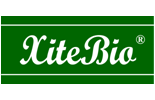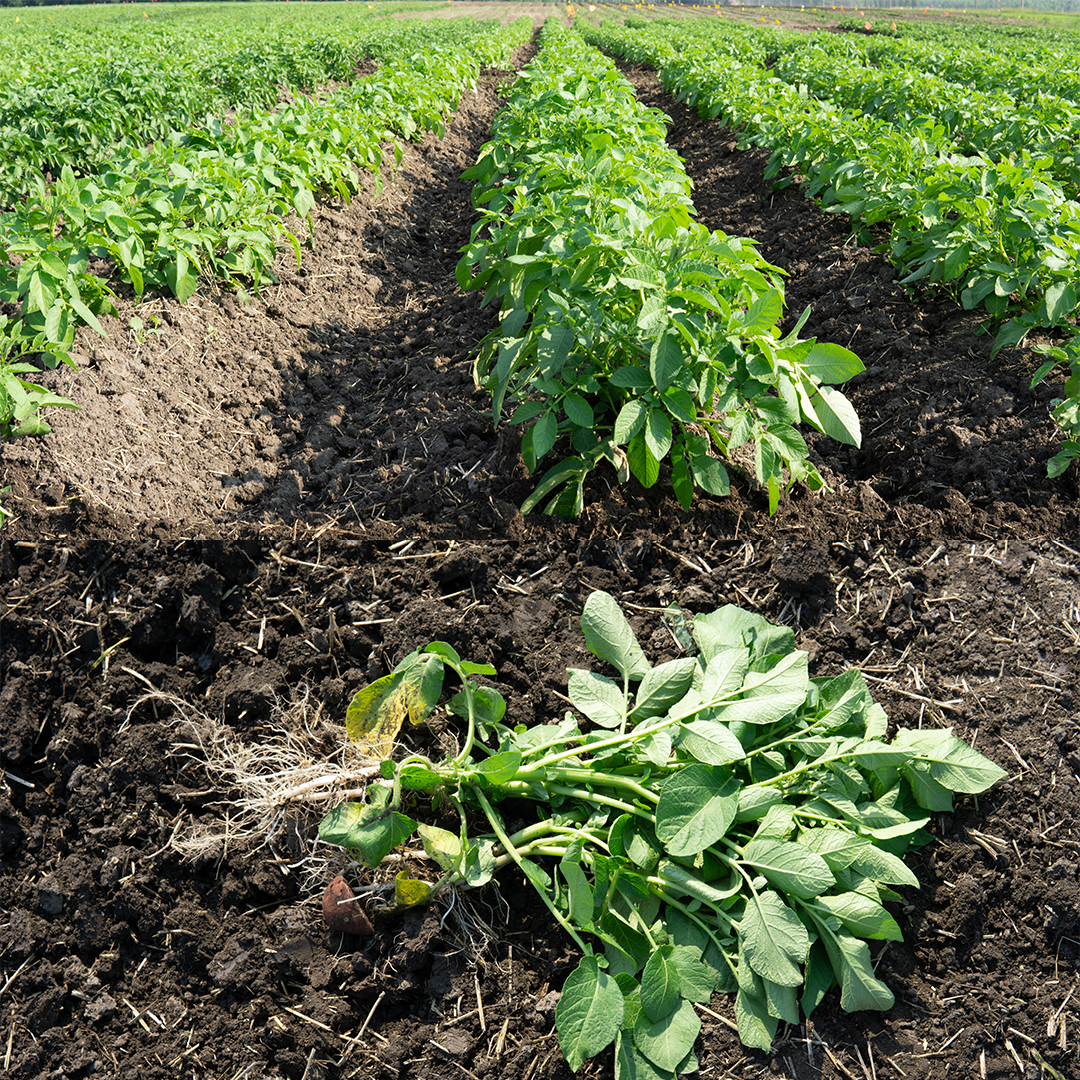With the arrival of August potato plants are well into their bulking stage. In this week’s edition of Growing Possibilities, we take a look at the growth cycle of the potato, what challenges potatoes face in the uptake of phosphorus (P) and the role ag-biologicals can play in nutrient use efficiency and optimization of yield for potato growers.
The potato plant has a growth cycle that can be broken down into five parts (1).
1. Sprout Development
2. Vegetative Growth
3. Tuber initiation
4. Tuber Bulking
5. Maturation
Each of these phases is distinct in it’s effect on vegetative, root & tuber development, and P is needed in differing amounts during each phase. They also take place at different times (number of days to maturity) depending on the length of the growing season. With shorter growing seasons needing to favour quicker development. Diagrams of these stages can be found on the University of Wisconsin-La Crosse website as well as from the Potato Growers of Alberta.
Phosphorus is not considered to be very critical during the initial phases of growth, however, for growers looking to get the best economic return on their potato crop P has a significant impact during tuber initiation as well as the tuber bulking phases. In addition, P uptake continues to be important during the maturation phase (2).
Potatoes have a shallow root system. This means their ability to uptake P as well as other nutrients is limited. Because of this, potato growers need comprehensive nutrient management plans (3). Potatoes (in Florida) were found to have a relatively low P removal rate of 25–45 kg/ha but often received as much as 112 kg P2O5/ha (4). We can see from these numbers that P is sometimes applied in excess to allow the plant to access as much P as possible. Potatoes have a hard time accessing P for two reasons: P is physically immobile in the soil and P is also chemically immobile in the soil (4).
The shallow root system plays a role in the potato plant’s difficulty in physically accessing P. Nutrition strategies like band application rather than broadcast P are recommended to allow the plant to access P in its physical vicinity (2). More P uptake can be facilitated by greater development of root hairs. Root hairs were found to be responsible for as much as 90% of P uptake by potato plants (5).
However, the issue remains of how to access P that is locked up chemically in the soil. Phosphorus solubilizing ag-biologicals like XiteBio® Yield+ and XiteBio® Tuber+ can play a role in a comprehensive nutrient management system. These ag-biologicals have two modes of action, the first one solubilizes the P in the soil unlocking it from ions like calcium, aluminum and iron. The second one produces phytohormones that trigger root hair growth in the plant, allowing the plant to develop a stronger root system that is better able to seek out and access P in the soil. These two modes of action allow our P-solubilizing ag-biologicals to mitigate challenges potatoes face in the uptake of P.
Ag-biologicals are not a silver bullet, they are part of a comprehensive nutrient management system practiced by farmers who know their soil, their crop and want to boost nutrient use efficiency & soil health. To properly use ag-biologicals it is important to understand the agronomic science behind any product that you choose to use on your farm. Ag-biologicals are not meant to replace chemical fertilizers, but they can allow for more sustainable farming practices that when used properly lead to healthier plants and better yields.
References:
1. http://bioweb.uwlax.edu/bio203/s2009/bradley_adam/Growth.htm
2. https://link.springer.com/article/10.1007/s11540-019-09431-2
3. https://extension.umn.edu/crop-specific-needs/potato-fertilization-irrigated-soils
4. https://xitebio.ca/what-is-p-solubilization/
5. https://edis.ifas.ufl.edu/publication/HS1465


